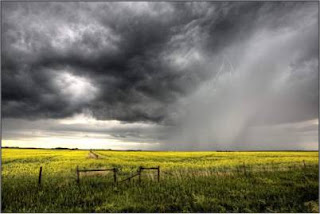Most Spanish language learners want to pull their hair out when deciding whether to use ser or estar. Like por and para, ser and estar can be very tricky for learners. Ser and estar both mean "to be" and are used frequently in daily Spanish communication. While it can be confusing, we have some tricks from ser and estar experts – aka Spanish teachers – that will alleviate the headache and make you more confident when differentiating between the two.
If you need a refresher on the specific differences between ser and estar, check out this article.
The Tips
1. Use ser for permanence and estar for transience.
This first tip is the guiding rule for figuring out when to use ser and estar. As you may already know, the main difference between ser and estar is that ser refers to more permanent traits of someone or something, while estar refers to transient conditions.Example: María es alta, delgada y rubia. (Maria is tall, thin, and blonde.)
Explanation: Physical traits that should not, under normal circumstances, change.
Example: Sandra está confundida porque no sabe cómo llegar al restaurante. (Sandra is confused because she doesn't know how to get to the restaurant.)
Explanation: Sandra is confused right now while finding her way to the restaurant, but she won't be confused tomorrow.
2. Ser and estar have the power to change a word’s meaning.
There are some words whose meaning is radically affected by choosing ser or estar."When we use ser, we separate the meaning from anything to do with time and duration. We could imagine it as a simple "=" sign. Estar establishes the possession of an attribute for a period of time." Using estar implies that something could stop or change, over time. reference
Example: La nieve es blanca. (The snow is white.) reference
Explanation: Here, the speaker is equating whiteness with snow.
Example: La nieve está blanca. (The snow is white.) reference
Explanation: While the speaker still emphasizes the snow is white, he/she focuses on the possibility of change, such as the snow becoming dirty.
Some other common examples:
Yo soy aburrido. (I am a boring person.) vs. Yo estoy aburrido. (I am bored.)
Daniel es nervioso. (Daniel is a nervous person.) vs. Daniel está nervioso. (Daniel is nervous.)
Ella es muy guapa. (In general, she’s a very good looking person.) vs. Ella está muy guapa. (She’s looking very attractive right now / today.)
3. Use estar for location; use ser when speaking about events.
Estar is usually used to describe where a person or thing is physically located. Although an event takes place at a physical location, when speaking about events occurring at a point in time, you should use ser. If the meaning of the verb is “to be held” or “to take place,” use ser.Example: El examen será en la biblioteca del colegio. (The exam will be held in the school library.)
Explanation: Use ser because the event location is considered to be a characteristic, or descriptor, of the event.
Example: El examen estará en mi escritorio. (The exam paper will be on my desk.)
Explanation: Use estar because you’re describing the location of the physical exam, not the event.
4. Use ser for an action; use estar for a current condition.
Use ser when you’re talking about the action taken on something or someone. Use estar when you’re talking about someone or something’s state.Example: La sopa fue cocinada por la familia Sánchez. (The soup was cooked by the Sanchez family.)
Explanation: The focus here is on the actual action of the family cooking the soup.
Example: La sopa está cocinada y lista para comer. (The soup is cooked and ready for consumption.)
Explanation: The focus here is on the resulting state of the soup – that it has been cooked and is ready to be eaten.
5. Use estar to describe how food tastes.
Although ser is usually used for permanent and descriptive characteristics, use estar to describe how food tastes.Example: El menú es delicioso. (The menu is delicious.)
Explanation: This is referring to the the things on the menu that, in general, don’t change.
Example: Este churro está delicioso. (This churro is delicious.)
Explanation: This is referring to the particular churro that will only exist at this point in time, until it is eaten.
6. Don’t worry – sometimes you can use ser or estar interchangeably!
There are times when it’s okay to user either ser or estar. In these cases, it is grammatically correct to use either verb, although one verb may feel more natural or accurate. These cases include:Words indicating marital status.
Example: Sale con una chica que está / es divorciada. (He’s going out with a girl who is divorced.)
With adjectives describing social manner when “to be” = “to behave.”
Example: Elena está / es cariñosa. (Elena is affectionate.)
With adjectives referring to weather, when applied to día and tiempo.
Example: El día es / está bueno. (The weather is nice today.)
We hope that these tips will help you feel more confident when using ser or estar. And remember, it’s okay to make mistakes! The more you practice, the easier it will be for you to choose the right verb.








No comments:
Post a Comment